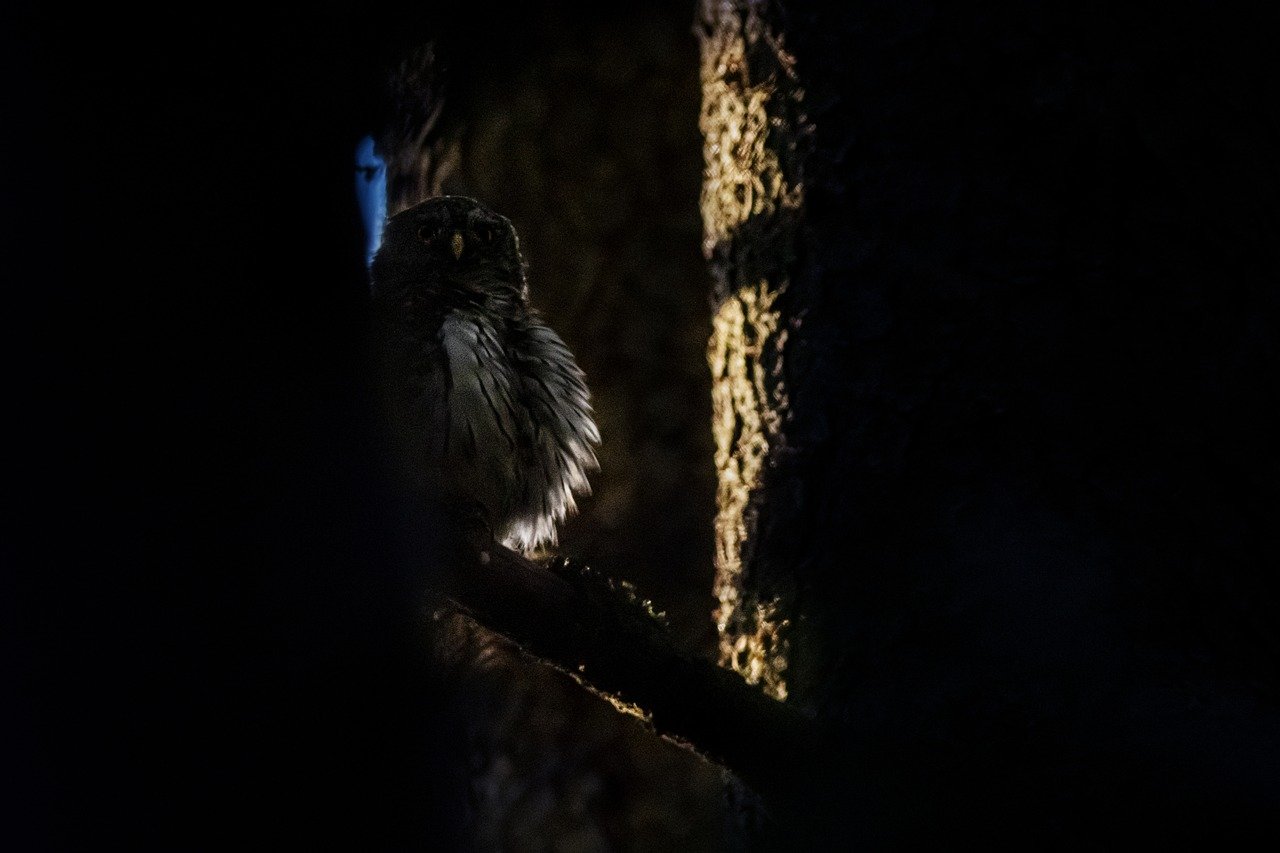The Eurasian Pygmy Owl (Glaucidium passerinum) is the smallest owl species in Europe and one of the most fascinating due to its diminutive size and remarkable hunting abilities. Here’s a closer look at this intriguing bird:
Description
- Size:
- The Eurasian Pygmy Owl is very small, measuring about 15–19 cm (6–7.5 inches) in length with a wingspan of 32–39 cm (12.5–15.5 inches). It typically weighs between 50 and 80 grams (1.8–2.8 ounces).
- Appearance:
- This owl has a round head with no ear tufts, yellow eyes, and a relatively short tail. Its plumage is generally brown with white speckles on the head, back, and wings. The underparts are whitish with dark streaks.
- The eyes are surrounded by a light-colored facial disc, which enhances its stern expression, often making it look larger and more imposing than it really is.
Habitat and Range
- Range:
- The Eurasian Pygmy Owl is found across a wide range in Europe and northern Asia, from Scandinavia and the Baltic region down through the Alps, and across Siberia to the Pacific coast.
- Habitat:
- It primarily inhabits coniferous and mixed forests, especially in mountainous regions. It prefers areas with old trees that have natural cavities for nesting. In some regions, it can also be found in lowland forests during the winter.
Behavior and Diet
- Diet:
- Despite its small size, the Eurasian Pygmy Owl is a skilled hunter. It preys primarily on small birds, mammals like voles and mice, and occasionally large insects. It is known to be very active during twilight hours, although it can also hunt during the day.
- Pygmy owls are known for their ability to catch prey larger than themselves and often store surplus food in tree cavities or other hidden spots to eat later.
- Hunting Technique:
- This owl hunts by perching quietly and waiting for prey, then swooping down swiftly. It uses its sharp talons and beak to capture and kill its prey efficiently.
Reproduction
- Breeding Season:
- The breeding season typically occurs from April to June. During this time, males attract females by singing and bringing food offerings.
- Nesting:
- The Eurasian Pygmy Owl nests in tree cavities, often using old woodpecker holes. The female lays 3–7 eggs, which she incubates alone for about 28–29 days. The male provides food during this period. Once hatched, the chicks remain in the nest for about a month before fledging.
Vocalization
- Call:
- The Eurasian Pygmy Owl has a distinctive, high-pitched whistling call, which is often repeated in a series. This call is usually heard during the breeding season and is used by males to mark their territory and attract females.
Conservation Status
- Conservation:
- The Eurasian Pygmy Owl is listed as a species of “Least Concern” by the IUCN, thanks to its wide distribution and generally stable population. However, in some regions, deforestation and habitat destruction pose threats to local populations.
Cultural Significance
- Symbolism:
- Due to its small size and elusive nature, the Eurasian Pygmy Owl is often seen as a symbol of mystery and wisdom in various cultures. Its appearance in folklore and mythology often associates it with good fortune and the protection of forests.
Summary
The Eurasian Pygmy Owl (Glaucidium passerinum) is a remarkable bird, combining its tiny size with formidable hunting skills. It plays a vital role in controlling small mammal and bird populations in its forest habitats. Despite being elusive, its distinctive calls and unique behavior make it a cherished species among birdwatchers and nature enthusiasts.
Visited 629 times, 27 visit(s) today
Views: 1003
Subscribe to the newsletter:
